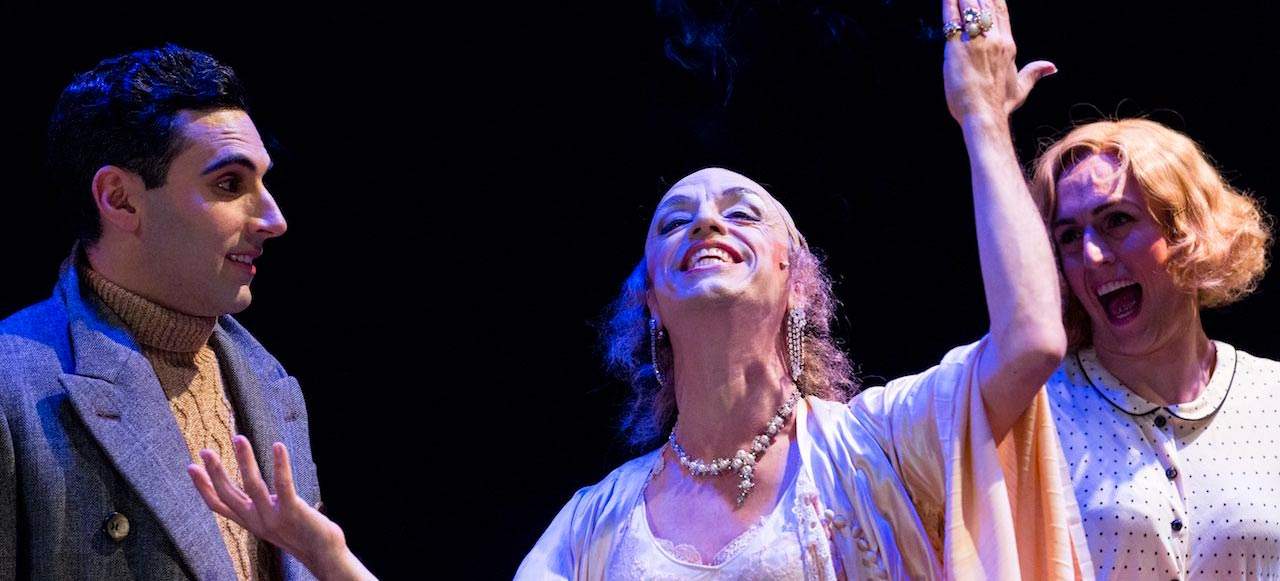Calpurnia Descending – Malthouse
Sisters Grimm will surprise, titillate and disorient you with ageing diva Beverly Dumont's return to the silver screen.
Overview
This review was written about the show's Sydney run in October-November 2014.
Very rarely do you attend an STC show with no clue what’s waiting for you. Yet Sisters Grimm’s Calpurnia Descending allures, ensnares then disorients, till you’re not sure you're even in the theatre/on Planet Earth/in this dimension any longer.
The Sisters Grimm (Declan Greene and Ash Flanders) are a spicy item on the Australian theatre menu, with their "gay DIY drag-theatre". Their newest creation, Calpurnia Descending, is a cynical farce, co-written by the Sisters and directed by Greene. Its witty, fast-paced dialogue and hilarious one-liners demonstrate why the company has burst beyond the confines of queer cabaret to stir up the Australian main stage.
Despite its covetable spot at the Wharf 2 Theatre, Calpurnia refuses to behave politely. It pisses on the sanctity of theatre and is sometimes downright silly. It begins with abrupt fanfare, leaving no time for us to get our bearings and continues full-pelt until every sense has been saturated.
The plot loosely follows the return to fame of washed-up New York actress Beverly Dumont, played superbly by Paul Capsis. Pack your asthma puffer for the stitches you’ll be in as Capsis performs the ageing diva, combining irreverence, melodrama and fragility in equal measure. His foil is Ash Flanders as Violet St Clair, the ever-recognisable ingenue who proves the age-old adage: anything too sweet will eventually kill you/make you fat.
It's Sandy Gore who delivers the most laughs, though, as she channels the crafts(wo)manship of 1980s New York drag king scene. The voice work and choreography is astonishing, almost too good. At times you have to pinch yourself to remember it's all live.
The show transports us to the silver screen of the '30s, which (thanks to the design team) is a surreal world of excess. Jed Palmer’s sound design playfully nudges us at key points of action, and Matthew Gingold and Matt Greenwood’s AV and animation overload us with colour, movement and product placement.
Calpurnia never misses a cheap gag either. I found the mix of high-budget tech-experimentation with moments of daggy melodrama delightful. Calpurnia constantly undermines the drama it has set up, making us sprint to catch-up.
The flouncing, pouting behaviour of Beverly Dumont is mimicked by the whole production: it asks, “Look at me! Look at me!” then leaves us embarrassed when the zoom-in results in overexposure. It’s as if Sisters Grimm received a healthy budget and so decided to Use. Every. Trick. I for one loved the splurge that afforded such vibrant, vacillating drag and disrobing.





